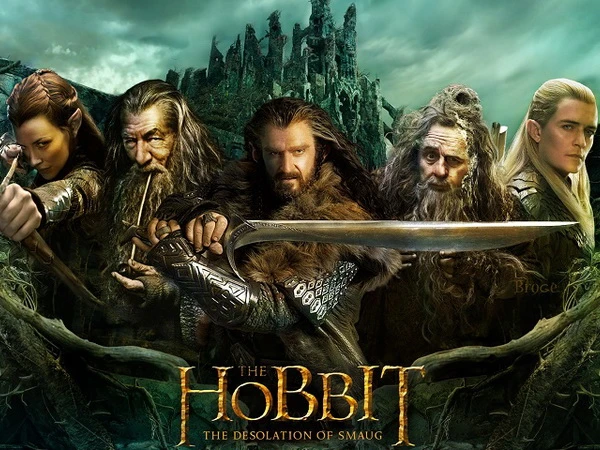The Hobbit (2013)

Premise: The film follows Bilbo Baggins (Martin Freeman), a hobbit living a quiet life in the Shire, who is unexpectedly recruited by the wizard Gandalf (Ian McKellen) to join a group of dwarves led by Thorin Oakenshield (Richard Armitage). Their quest is to reclaim the Lonely Mountain and its treasure from the dragon Smaug. Along the way, Bilbo encounters various challenges and discovers his own bravery and resourcefulness.
Themes:
- Heroism and Self-Discovery: A central theme is Bilbo’s journey from a cautious hobbit to a brave hero. His growth and self-discovery are pivotal to the narrative.
- Adventure and Courage: The film emphasizes the excitement and perils of adventure, showcasing the courage required to face formidable challenges.
- Friendship and Loyalty: The relationships between Bilbo and the dwarves, especially Thorin, highlight the importance of loyaltyand camaraderie.

Characters and Performances
Martin Freeman as Bilbo Baggins: Freeman’s portrayal of Bilbo captures both the character’s initial reluctance and his eventual bravery. His performance is grounded and relatable, making Bilbo’s transformation believable and engaging.
Ian McKellen as Gandalf: McKellen reprises his role as Gandalf with the same gravitas and wisdom seen in The Lord of the Rings. His presence is reassuring and authoritative, providing guidance and depth to the story.
Richard Armitage as Thorin Oakenshield: Armitage brings intensity and complexity to Thorin, whose quest for reclaiming his homeland is driven by a mix of pride and desperation. His character arc, involving internal conflict and leadership challenges, is central to the film.
Supporting Cast: The ensemble cast, including characters like the dwarves (played by actors such as Ken Stott, Graham McTavish, and Aidan Turner) and characters like Gollum (Andy Serkis), adds richness to the film. Gollum’s scene, in particular, is a highlight, showcasing a tense and memorable encounter with Bilbo.
Production and Aesthetic
Direction and Screenplay: Peter Jackson’s direction continues the epic style established in The Lord of the Rings. The screenplay, adapted by Fran Walsh, Philippa Boyens, and Peter Jackson, expands on Tolkien’s novel by incorporating additional material from The Silmarillion and appendices, providing a broader context for the story.
Cinematography and Visual Effects: The film’s visual style is characterized by its lush landscapes and intricate CGI. The cinematography captures the beauty of Middle-earth, while the visual effects bring fantastical elements, such as Smaug and the trolls, to life with impressive detail.
Music: Howard Shore’s score continues the musical themes from The Lord of the Rings, blending new compositions with familiar motifs. The music enhances the film’s epic and emotional moments, contributing to its immersive experience.